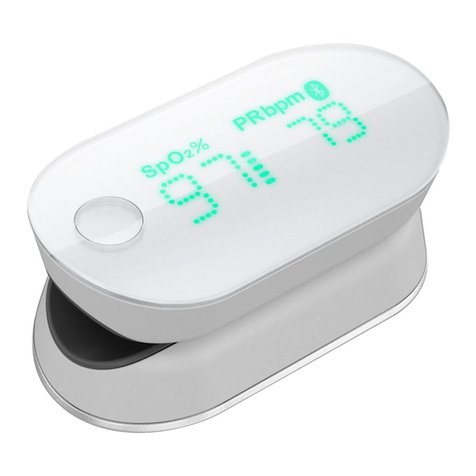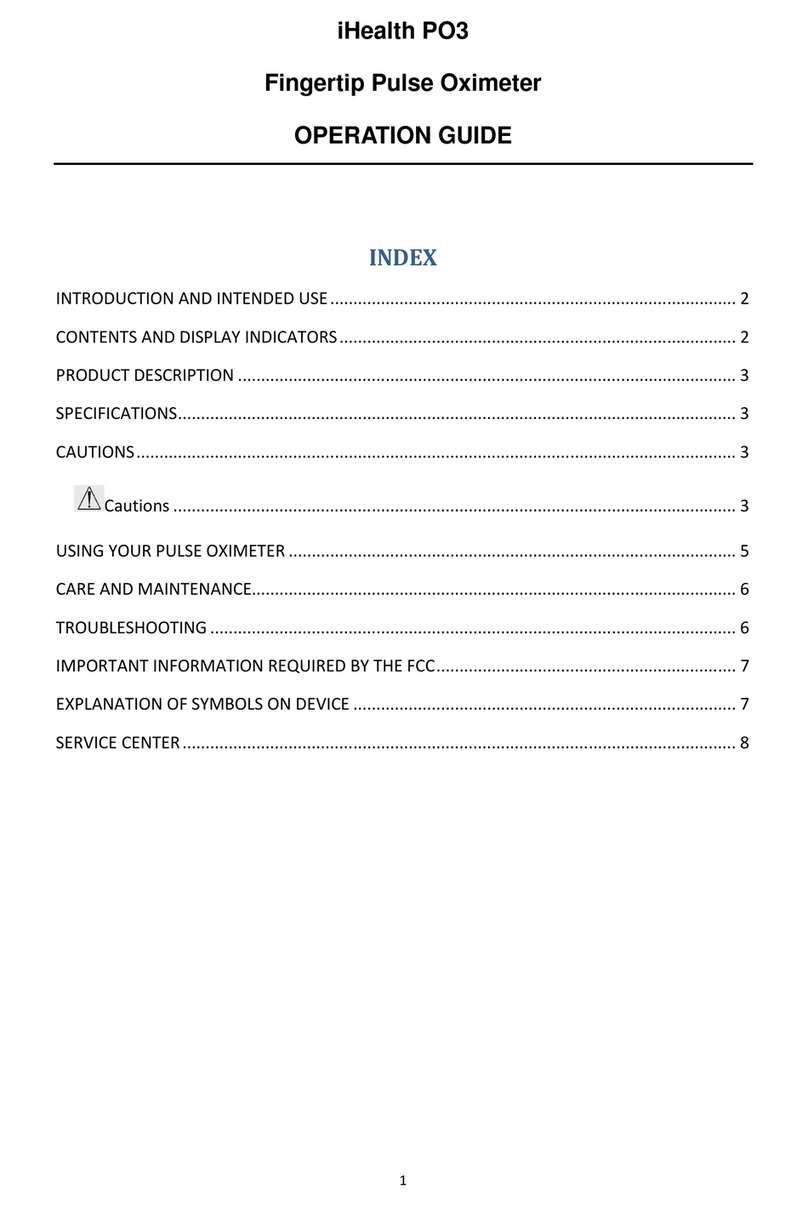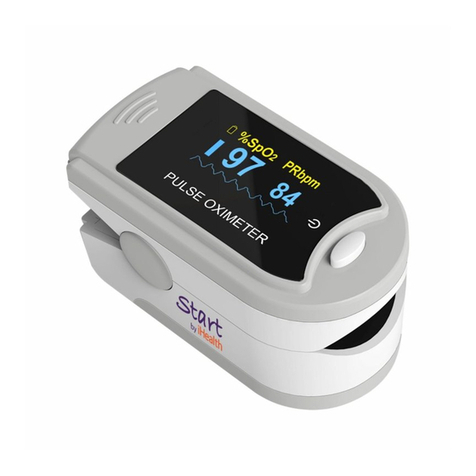7. Any of the following conditions may cause inaccurate measurements of the Pulse
Oximeter, including BUT NOT LIMITED TO:
- Flickering or very bright light;
- Poor blood circulation;
- Low hemoglobin;
- Hypotension, severe vasoconstriction, severe anemia or hypothermia;
- Nail polish, and/or articial nails;
- Any tests recently performed on you that required an injection of intravascular dyes.
8. The Pulse Oximeter may not work if you have poor circulation. Rub your nger to
increase circulation, or place the device on another nger.
9. The Pulse Oximeter measures oxygen saturation of functional hemoglobin. High
levels of dysfunctional hemoglobin (caused by sickle cell anemia, carbon monoxide,
etc.) could aect the accuracy of the measurements.
10. Do not use the Pulse Oximeter in a combustible environment (i.e., oxygen-enriched
environment).
11. Do not use the Pulse Oximeter outside the specied operating and storage
temperature ranges.
12. Field strengths from xed transmitters, such as base stations for radio (cellular/cord-
less) telephones and land mobile radios, amateur radio, AM and FM radio broadcast
towers, and TV broadcast towers may aect accuracy.
13. The materials used in the Pulse Oximeter are nontoxic and present no health
hazards when used as intended.
14. Use in emergency vehicles with communication systems may aect reading
accuracy.
15. The packing material of the Pulse Oximeter are recyclable and must be collected
and disposed of according to the related regulations in the country or region where the
package of the device or its accessories is opened.
6


































